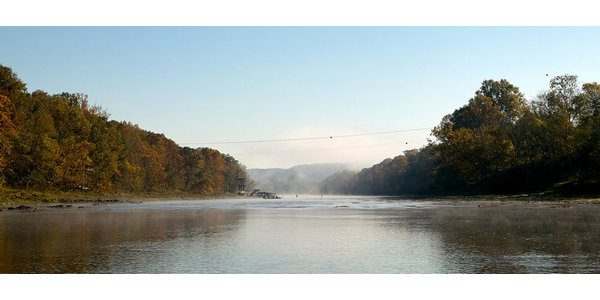
One of three public meetings seeking input into a study of hydrology and water needs associated with the upper White River Basin will take place Monday evening from 6 until 7:30 in the Trout Nature Center in the Vada Sheid Community Development Center on the campus of Arkansas State University-Mountain Home.
The goal of the public meetings is to gain stakeholder input to help develop a detailed basin-wide analysis examining all uses of water in the basin and how well the system provides resources to meet those needs.
Arkansas State University initiated this study with the Little Rock District, U.S. Army Corps of Engineers, in September 2018.

There are three phases of the study.
Phase 1, which is underway, involves gathering stakeholder input pertaining to current water resource needs. In phase 2, input gathered from phase 1 will be used to develop a detailed scope of work for an in-depth analysis of the water uses in the basin and how those uses are being met by current operational procedures.
Areas to be addressed in this interdisciplinary study may include the following: flood control, economics, hydropower generation, recreation, water supply, environmental flows and agricultural interests, among others.
Exact scope and other study details are being developed. They will be dependent on available funding sources and feedback solicited in phase 1.
Finally, phase 3 includes initiating the actual study and performing the interpretive analyses.
Jaysson Funkhouser, program manager with the Little Rock District, USACE, leads the study for the Corps and led the efforts to secure a research partnership with a university.
Funkhouser says, “We are pleased to have A-State leading this study. The White River Basin encompasses large portions of Missouri and Arkansas. The U.S. Army Corps of Engineers owns and operates six dams in the basin and the dams are operated as a system to reduce frequency and severity of floods, provide water supply, generate hydroelectric power and provide minimum environmental flows downstream of Bull Shoals and Norfork lakes.”
He says, “A study of this complexity requires that USACE partner with a non-partial academic institution to lead and produce independent research on the basin.”
Dr. Abhijit Bhattacharyya, dean of the College of Engineering and Computer Science at A-State, says, “The big river study will create significant research opportunities for our faculty and students concerning an issue that touches the lives of so many Arkansans. The study will take several years and will allow the faculty and students to make valuable contributions towards a sustainable future for Arkansans and the citizens of the Delta region in particular.”
Funkhouser says in addition to the public meetings, individual stakeholder meetings will be scheduled at each location.
He says, “We want to make sure that we get input from all of our stakeholders. In this way, we should have the best information available to us to design a study that will address the stakeholders’ needs.”
For more information on the study, including the other meetings, a web page has been created at whiteriverbasinstudy.com.
Researchers are also collecting public comments on the White River Basin Study through this website.
WebReadyTM Powered by WireReady® NSI










